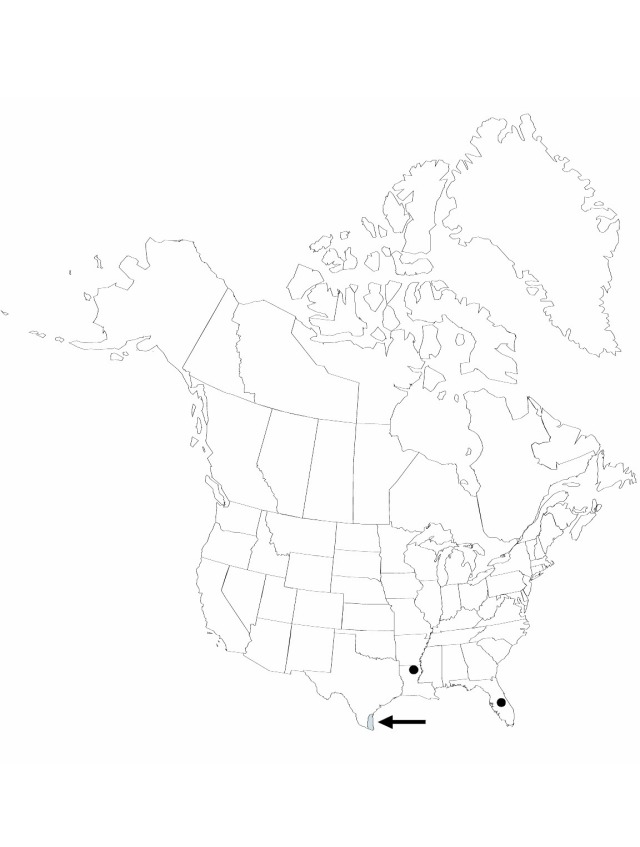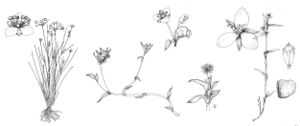Revision as of 01:28, 27 July 2019 by FNA>Volume Importer
Herbs, perennial, mat-forming, repent (flowering stems ascending). Leaves 2-ranked, gradually reduced toward ends of flowering stems; blade ovate to lanceolate or lanceolate-oblong, 1–3.5 × 0.6–1 cm (distal leaf blades much narrower than sheaths when sheaths opened, flattened), margins scabrid, apex acute, glabrous. Inflorescences sessile in axils of distal leaves of flowering stems, composed of pairs of sessile cymes (sometimes reduced to single cymes). Flowers bisexual and pistillate, odorless, subsessile; petals inconspicuous, white, lanceolate, 3–6 mm; stamens 0–6, long-exserted; filaments glabrous; ovary 2-locular, stigma penicillate. Capsules 2-locular. Seeds 1 mm.
Phenology: Flowering early spring (Tex) or summer–fall (Fla.).
Habitat: Shady, rocky or gravelly places, and in citrus groves
Distribution

Fla., La., Tex., West Indies, South America (to Argentina).
Discussion
Selected References
None.
Lower Taxa
None.
